Among various silicone manufacturing methods, silicone extrusion is one of the most common and efficient processes. From automotive door frames and building facades to medical tubing and household appliance seals, different silicone extrusion profiles play a crucial role.
Profiles with varying shapes and hardness can meet the performance needs of different applications. Understanding these types is essential for grasping silicone product design.
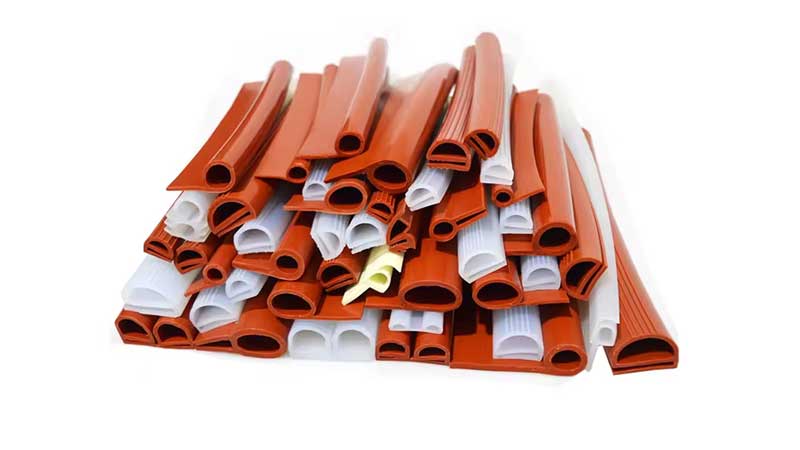
What Is a Silicone Extrusion Profile?
A silicone extrusion profile is made by continuously forcing mixed silicone material through a mold to form the desired cross-section. The profile is then vulcanized at high temperature, cooled, and cut to length.
Common silicone materials include High-Temperature Vulcanized silicone (HTV) and Liquid Silicone Rubber (LSR). HTV is suitable for profiles with complex structures and high strength requirements, while LSR is better for products needing high precision and smooth surfaces.
Silicone itself offers several advantages:
- Stable performance across a wide temperature range from -60°C to 250°C
- Excellent resistance to UV, ozone, and aging
- Good flexibility, elasticity, and electrical insulation
- Customizable in hardness, color, and formulation
What Are the Common Types of Silicone Extrusion Profiles?
The most distinctive feature of silicone extrusion profiles is that their cross-section determines their function. Different shapes affect sealing performance, elasticity, and installation methods. They also guide their practical applications. Here is a detailed overview of common types:
U-Shaped Silicone Strip
Structure: The U-shaped profile has an open middle, resembling the letter U. It can easily clamp onto edges of glass, metal, or plastic. Depending on the application, it can include a metal core or remain fully flexible without a core.
Advantages: Flexible opening, easy to install and remove; absorbs vibration to prevent edge damage; optional thickened edges improve grip and anti-slip performance.
Typical Applications: Shockproof door and window seals, glass edge protection, mechanical guard sealing slots, dustproof strips for electronic enclosures.

D-Shaped Silicone Strip
Structure: The D-shaped profile is semicircular on top with a flat base. When compressed, the curved surface deforms evenly, creating a stable seal.
Advantages: Excellent compression and rebound, suitable for frequently opened doors; soft touch with mechanical support; smooth surface, easy to clean, and water-resistant.
Typical Applications: Automotive door seals, boat hatch waterproof rings, industrial cabinet sealing edges, air conditioner and appliance housings.
P-Shaped Silicone Strip
Structure: The P-shaped profile has a hollow or semicircular bubble on top and a flat base or adhesive surface. This design allows it to compress for sealing while fitting the installation surface.
Advantages: Hollow structure enhances cushioning and water resistance; provides strong air and water tightness; maintains elasticity under repeated compression.
Typical Applications: Refrigerator and freezer door seals, industrial waterproof doors and cabinet frames, medical and laboratory equipment sealing edges.
E-Shaped Silicone Strip
Structure: The E-shaped profile has multiple parallel chambers resembling the letter E. These chambers compress progressively under pressure, improving sound insulation and sealing.
Advantages: Multi-chamber design enhances airtightness and sound insulation; distributes pressure evenly, suitable for high-frequency openings; minimal deformation and long lifespan.
Typical Applications: Premium door and window seals, industrial dust and water protection, building facade windproof seals.
H-Shaped Silicone Strip
Structure: H-shaped profiles have two channels to hold or connect two panels or glass sheets. A central connecting bar provides flexibility to absorb movement and vibration.
Advantages: Stable and neat connection; allows thermal expansion and prevents glass cracking; easy to install, removable, and reusable.
Typical Applications: Glass connectors in building facades, display cases and partition glass seals, laboratory protective screens.
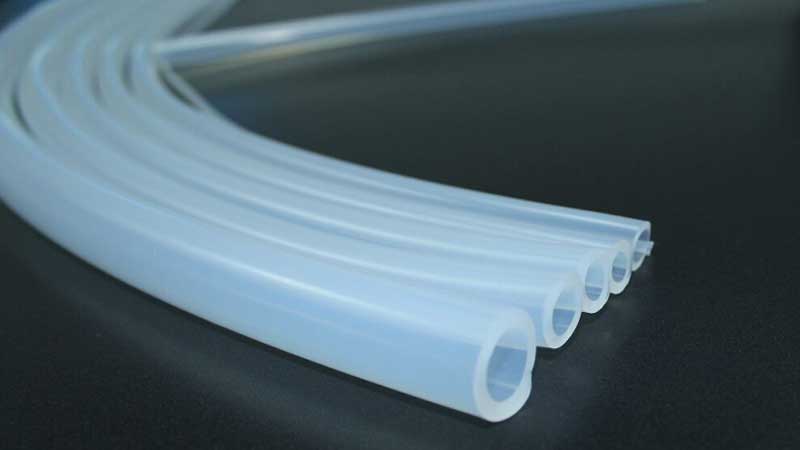
T-Shaped Silicone Strip
Structure: The T-shaped profile has a vertical leg that fits into a slot, with expanded sides for support. It anchors firmly in place.
Advantages: Compact structure, secure installation; can serve as decorative or transitional sealing strips; remains stable under vibration.
Typical Applications: Decorative edges for furniture and machinery, appliance housing seals, industrial dustproof sealing structures.
L-Shaped Silicone Strip
Structure: L-shaped profiles form a right angle, often used at corners or panel edges. They can be solid or hollow for impact absorption or dust sealing.
Advantages: Fits corners closely, protecting edges; prevents dust and moisture ingress; improves overall appearance.
Typical Applications: Electrical cabinet edge protection, door and window corner seals, equipment corner guards.
Round and Tubular Silicone Strips
Structure: Round or tubular profiles can be solid or hollow. Solid types are mainly for sealing and cushioning, while hollow types suit gas or liquid transfer.
Advantages: Soft and flexible, easy to bend; hollow structure meets high airtightness and waterproofing requirements; good transparency and temperature resistance.
Typical Applications: Medical tubing, laboratory pipelines, O-rings and gaskets, food-grade fluid transfer hoses.
Square and Rectangular Silicone Strips
Structure: Square or rectangular profiles are simple but versatile. They can be solid or hollow, soft or hard, depending on the application.
Advantages: Strong load-bearing and shape stability; suitable as cushioning pads, support blocks, or spacers; easy to process and bond.
Typical Applications: Industrial sealing pads, equipment support strips, anti-vibration mats for appliances, laboratory anti-slip mats.
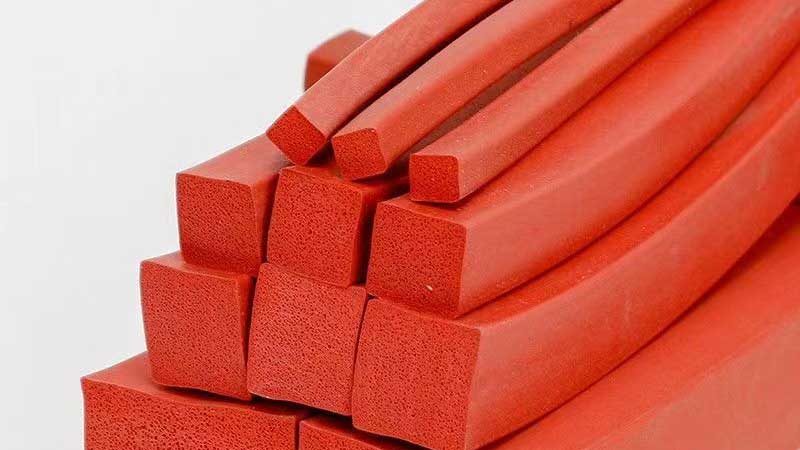
What Factors Should Be Considered When Choosing Silicone Extrusion Profiles?
When selecting silicone extrusion profiles, it is important to consider material properties, operating environment, and installation requirements. This ensures the profile performs optimally in its intended application. Here are key factors with examples of suitable profiles:
Operating Environment
Silicone profiles face very different conditions depending on their application.
Temperature is a primary concern. High heat may soften or age the material, while low temperatures can reduce elasticity and flexibility.
Humidity and moisture also affect long-term sealing, especially in doors, windows, refrigerators, or waterproof equipment.
For outdoor use, UV exposure and contact with chemicals such as cleaners, oils, or solvents must be considered. Choose silicone formulas with UV resistance and chemical resistance when needed.
Examples:
- Outdoor door and window seals → U-shaped or D-shaped, UV and weather resistant
- Refrigerator or freezer seals → P-shaped or hollow round, low temperature resistant and waterproof
- Chemical equipment seals → E-shaped or custom profiles, chemical resistant
Compression and Rebound Performance
Sealing and cushioning are essential functions of extrusion profiles. The profile’s ability to compress and rebound directly affects sealing efficiency and service life. High-quality silicone profiles maintain their elasticity even after repeated compression and release, resisting permanent deformation.
Examples:
- Door and window seals → D-shaped or E-shaped, rebound after repeated use
- Mechanical protective strips → L-shaped or T-shaped, stable under repeated pressure
- Medical device sealing rings → P-shaped or custom composite, retain shape after repeated compression
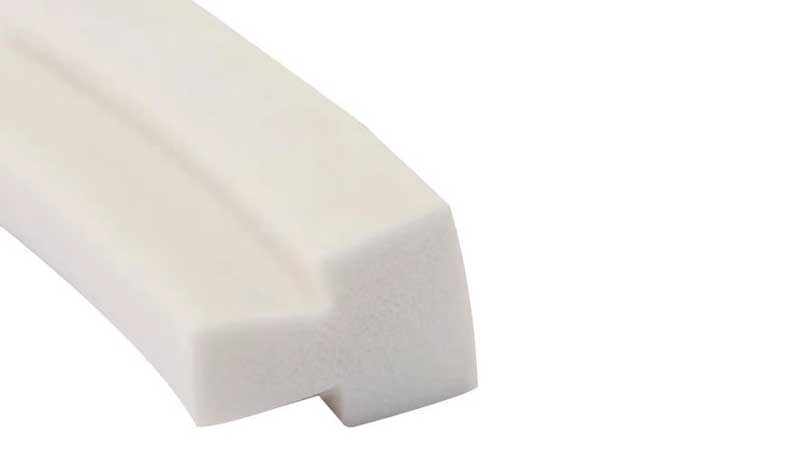
Hardness and Flexibility
Silicone hardness is usually measured in Shore A. It can be adjusted to meet specific application needs.
Higher hardness profiles can withstand greater pressure and provide stronger seals or support.
Lower hardness profiles are softer and more flexible, making installation easier and adapting to complex shapes.
Examples:
- High-pressure sealing → Square, rectangular, or H-shaped hard silicone
- Flexible sealing and cushioning → U-shaped, P-shaped, or round hollow, low hardness
- Decorative with sealing → L-shaped or T-shaped, moderate hardness and flexibility balance
Installation Method
Silicone profiles can be installed in various ways. The choice depends on structural design and field conditions:
- Slot-fit: Pressed or snapped into a groove, suitable for mechanical assembly, easy to remove and reinstall.
- Adhesive-backed: Comes with glue for quick attachment to flat or curved surfaces, but not suitable for high tension.
- Co-extruded composite: Combined with hard materials or functional layers, offering higher stability and sealing performance after installation.
Examples:
- U-shaped and D-shaped seals → Slot-fit installation
- L-shaped and T-shaped decorative/sealing strips → Adhesive-backed installation
- Custom composite or dual-hardness co-extruded profiles → Co-extrusion, ideal for complex assemblies
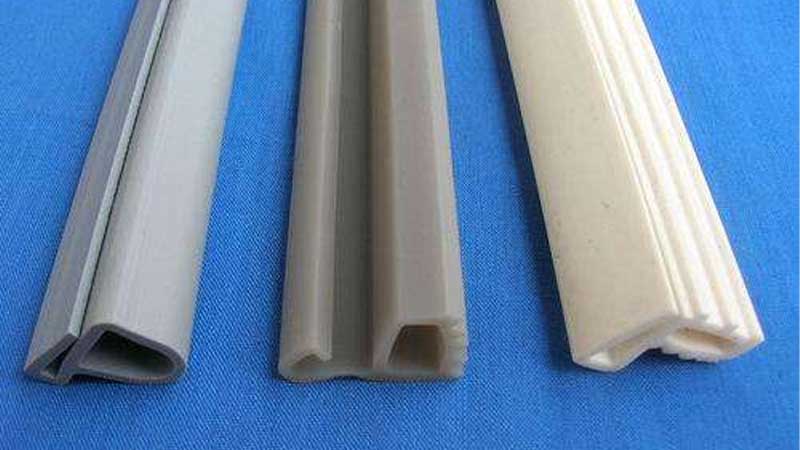
Conclusion
The key principle of silicone extrusion profiles is that the cross-section determines the function. Different profiles offer advantages in sealing, cushioning, fixing, and decoration. When choosing a profile, it is important to evaluate carefully and match the profile’s cross-section with the application requirements.
With decades of experience in the silicone industry, we have deep material knowledge and mature extrusion techniques. We can custom-make silicone profiles in various cross-sections and functions, ensuring each product delivers optimal sealing, cushioning, and durability.